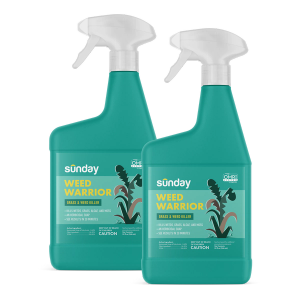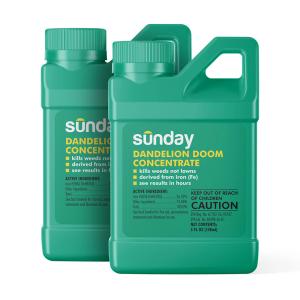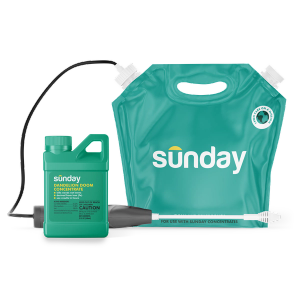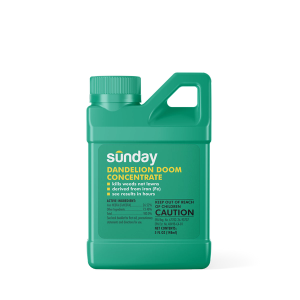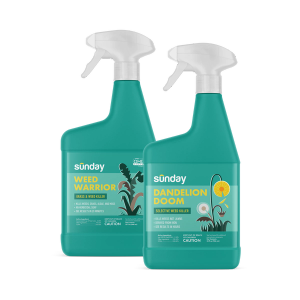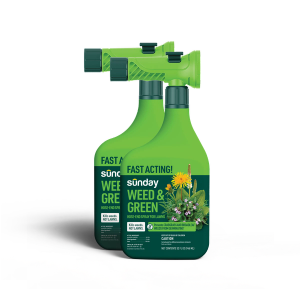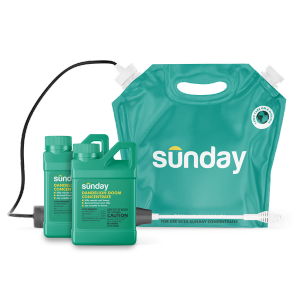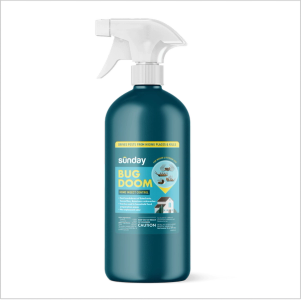Why fall?
The push for lawn care and weed removal in the spring and summer is a theme we’ve become familiar with. However, industry professionals and lawn care experts know fall is one of the most beneficial times to remove and treat weeds. Here’s why:
- Plants are easier to spot. As summer enters into fall, your grass may lose its vibrant color while weeds continue to remain bright green. For sheer identification advantage alone, this is a great time to spot and pull weeds.
- Weeds are going to seed. Many annual* weeds are starting to produce seed come fall. If removed or treated now, these weeds can’t re-seed, meaning new weeds won't sprout in the spring.
- Everything’s going to the roots. In fall, perennial* weeds are storing energy in their roots for next year. Killing off or removing above-ground plant parts means the plant won't be able to make and store enough energy to last until next year.
- Weeds are headed for winter. Finally, if you weaken plant systems enough, winter season harsh conditions can do the rest of the work for you. Weak weeds will die off before more favorable spring conditions arrive.
*Perennial simply means they don’t die. Like your grass, these weeds go dormant and come back in the spring.
*Annual means they die at the end of the season (often after producing seeds and leaving those little gifts behind).
How to remove fall weeds
- Identify your weeds. Some common summer annuals weeds are crabgrass, knotweed, and prostrate spurge. Winter annuals and perennials include bluegrass, henbit, dead nettle, chickweed, dandelion, dallisgrass, creeping charlie, ground ivy, plantain, and nutsedge.
- Try hand pulling weeds first especially if they are weak or dying. Summer annuals are weaker this time of year so it is oftern easiest to pull them.
- Decide if weed control products are needed. Consider removing any weed flowers prior or avoid spraying directly on flowers to prevent harm to pollinators.
- Patch bare spots or overseed into thinning areas. When hand pulling dying weeds, it’s important to seed bare patches to help your lawn crowd out any new or returning weeds come spring. Don't forget to properly water seed for success.
- Re-visit zones in spring to determine is any additional seeding or planting is needed to fill bare spots.
Dandelion Doom and Weed Warrior for fall weeds
Both of our weed products are effective on a variety of weeds that pop through in the fall. Use our weed identification guide for a full list of which product will work best on your problem plants.
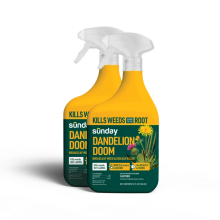
Dandelion Doom Herbicide Spot Treatment
Our iron-powered solution kills broadleaf weeds—but not grass—on the spot.
Controls bull thistle, creeping buttercup, dandelion, moss, speedwell species, white clover, black medic, English daisy, and more!
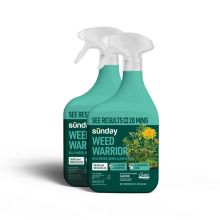
Weed Warrior Herbicide Spot Treatment
This herbicidal weed and grass killer is ideal for use in flower beds, patios, sidewalks, and mulched areas
Controls bluegrass, chickweed, crabgrass, corn spurry, dandelion, groundsel, lambsquarters, chickweed, mustards, plantain, redroot pigweed, round leaved mallow, shepherd’s-purse, thistle, and more!
After treating fall weeds, what’s next?
Getting a good handle on your fall weeds is a key lawn care practice to add to your routine. However, there’s an entire process to getting your lawn in order post-summer. Check out our best fall lawn care tips to get your lawn settled for the winter ahead and ready for spring.
More on annuals vs. perennials
While fall is the best time to remove most weeds, not every weed should be treated in the same way.
Annuals
There are two different types of annuals, summer and winter. Winter annual weeds are just starting to sprout. Because they are still small, they are much easier to remove and treat right now, before they get big and grow deep roots. Summer annual weeds, on the other hand, should not be treated right now. Why? Summer annuals are already in decline, meaning any weed control treatment right now would be wasteful and ineffective. Instead, hand pull these and save your weed control for those tougher to remove perennial weeds.
Perennials
This category of weeds is kind of impressive in their ability to return year after year, regrow from root parts, and establish quickly. These characteristics also tend to mean they are tough to remove from your lawn if the entire root is not removed or if weed control is not timed correctly. However, fall is the best time to remove perennials. The plants are most vulnerable to spot treatment right now because as they send energy stores to roots, any spot treatment applications will kill above-ground tissue, reducing the amount of energy that can be stored in the roots over winter—effectively killing the plant.
Sunday sustainability tip: While you probably don’t want weeds to take over your entire yard, weeds can be beneficial for the larger ecosystem your yard needs to thrive. To help migrating birds and late-season pollinators, we recommend allowing some weeds to flower and then hand-pull prior to setting seed.
Cited sources
Fall Lawn Weed Control. Nebraska Extension.
Fall is the Time to Control Broadleaf Weeds. Kansas State University Extension.
Turf: A Guide to Weed Life Cycles. UMass Center for Agriculture, Food, and the Environment.







